-
Membership
Membership
Anyone with an interest in the history of the built environment is welcome to join the Society of Architectural Historians -
Conferences
Conferences
SAH Annual International Conferences bring members together for scholarly exchange and networking -
Publications
Publications
Through print and digital publications, SAH documents the history of the built environment and disseminates scholarship -
Programs
Programs
SAH promotes meaningful engagement with the history of the built environment through its programs -
Jobs & Opportunities
Jobs & Opportunities
SAH provides resources, fellowships, and grants to help further your career and professional life -
Support
Support
We invite you to support the educational mission of SAH by making a gift, becoming a member, or volunteering -
About
About
SAH promotes the study, interpretation, and conservation of the built environment worldwide for the benefit of all
SAHARA Highlights: Islamic Architecture and Mosques
Oct 14, 2021
by
Jacqueline Spafford and Mark Hinchman, SAHARA Co-Editors
All mosques look to the Prophet’s home in Medinah, 623, as their model. It was a simple structure, built as a house with agricultural functions. It had a roofed area, a surrounding perimeter wall, and a generous courtyard. These all became constituent parts of a mosque as its design unfolded over centuries. As Islam spread, regional variations developed, especially noteworthy ones in China, North Africa, and the Mughal Empire. A SAHARA/Artstor search for ‘Mosques’ yielded 1185 hits, with results spread across Europe, Asia, and Africa. Thirty-nine were for North America, with none for South America. Adding more Islamic architecture from more Asian countries and South America remains an aspiration. Two hundred and seventy-four of SAHARA’s photographs of mosques are also part of the Public Collection, shared with Artstor, meaning that they will reach an audience outside of SAH membership.
We are grateful to the ten photographers represented here, whose interests started in their native lands, and spread across the globe. Whether your wanderings take you far and wide, or close to home, please add your contributions to the SAHARA collection.
To see more SAHARA content: sahara.artstor.org/#/login
To learn more about contributing, visit: sah.org/sahara
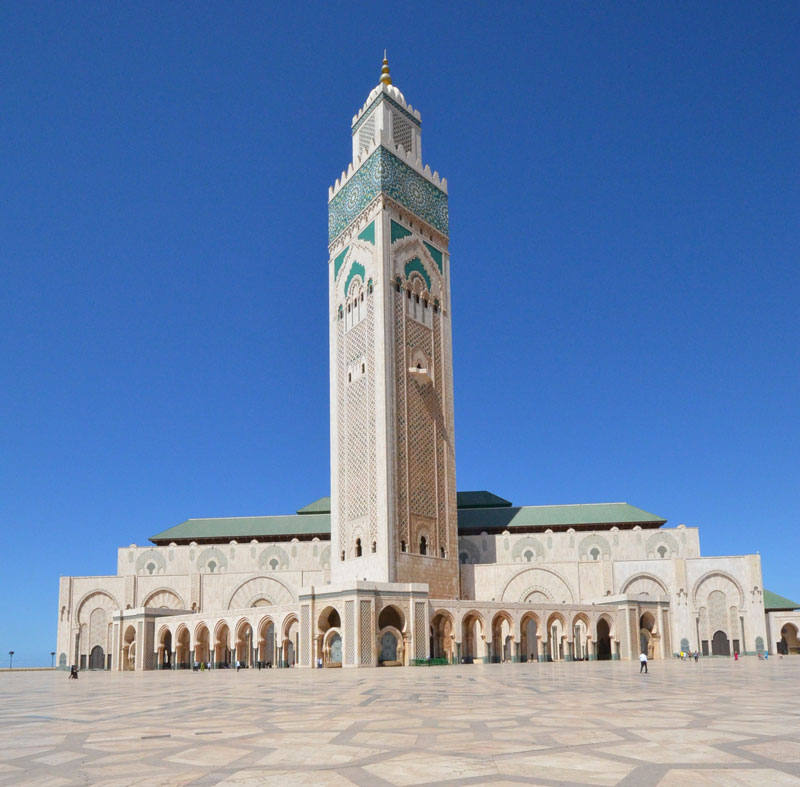
Michel Pinseau, Hassan II Mosque, Casablanca, Morocco, 1993. Photograph by Louis Nelson, 2011. The mosque is dramatically sited on the Atlantic coast of the Moroccan capital city. Its design makes multiple references to the history of Islamic architecture especially Moorish/ Spanish architecture. Its minaret, the 2nd largest in the world, resembles the minaret of the Great Mosque of Sevilla.

Unknown, Monastery converted to a mosque, Güzelyurt, Niğde, İc Anadolu, Turkey, before 1923. Photograph by Aymar Mariño-Maza, 2019. Mariño-Maza was a recipient of the 2018 H. Allen Brooks Travelling Fellowship and contributed this photograph to SAHARA as part of her research.
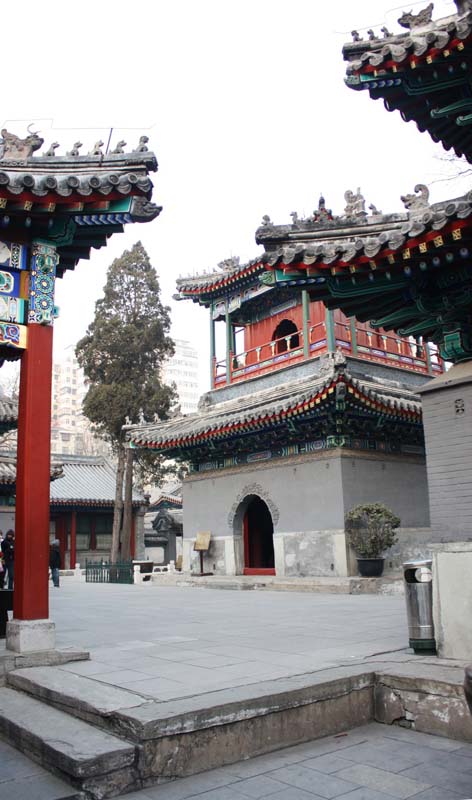
Unknown, Niujie Mosque, Beijing, China, 10th to 17th centuries. Photograph by Huda Tayob, 2012. It is the largest mosque in Beijing, in the Islamic area of the town. The timber structure does not have the obvious decorative characteristics associated with Islamic architecture, and shares many of the qualities associated with monumental Chinese buildings. Yet it has the standard parts of a mosque: mihrab, qibla, prayer hall, courtyard, tower and ablutions fountain. Tayob hails from South Africa and has contributed photographs of buildings in Ethiopia, Japan, and China.
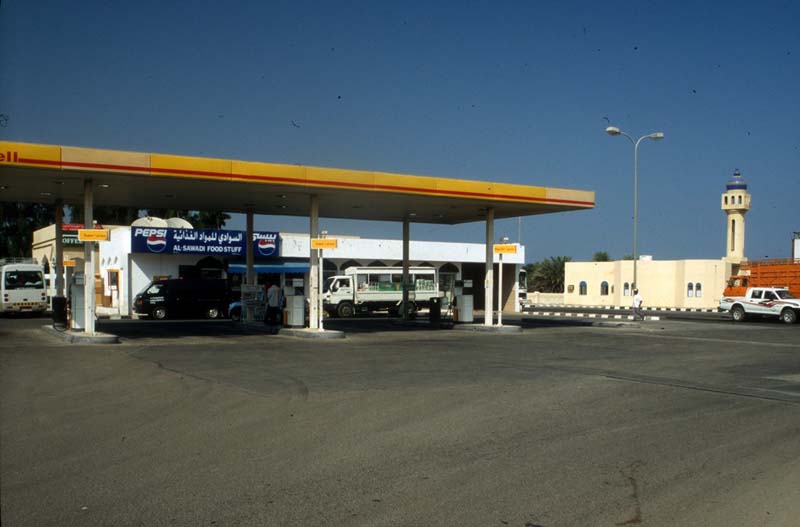
Unknown, Rest area with gas station, mosque, and market, Al-Sawadi, Oman, late 20th century. Photograph by Dell Upton, 2004. Author and photographer Upton writes extensively on vernacular architecture, which explains his interest in this ensemble. Many Omani truckers want to pray, and highway rest stops in Oman frequently include modest mosques. Upton has added most of his photographs to the Public Collection of ArtStor in addition to the standard Members’ Collection.
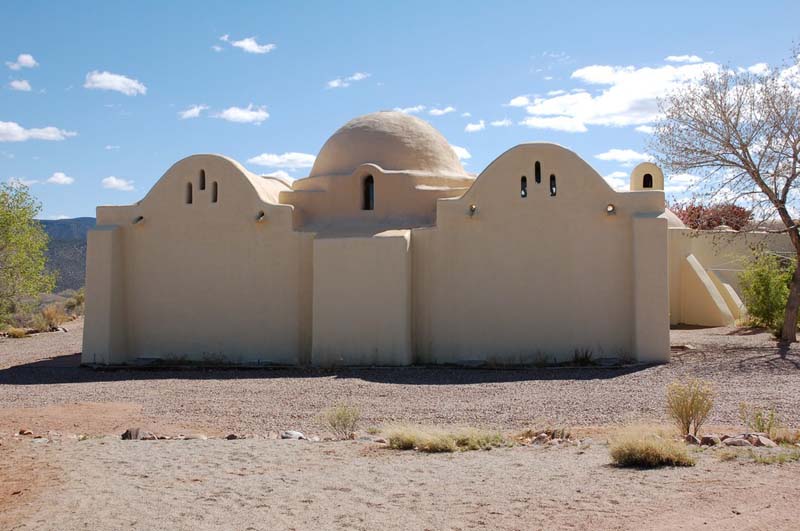
Hassan Fathy, Dar al Islam Mosque, Abiquiu, New Mexico, 1980. Photograph by Leah Theis, 2012. Fathy was one of Africa’s most significant architects and theorists, the author of Architecture for the Poor. He was an early advocate for sustainability and was a vocal champion of local building techniques. He became famous for his contemporary buildings based on Nubian brick dome structures that have proven the test of time for millennia. His building in New Mexico is his only building in the western Hemisphere, a commission he received because the climate is similar to Egypt’s, and American Southwestern adobe is similar to Nubian dried brick. The research for this overlooked structure comes from an SAH Archipedia entry, written by Lillian Makeda. The SAHARA editors are members of the the SAH Digital Advisory Committee, and one of our interests is forging collaboration between platforms.
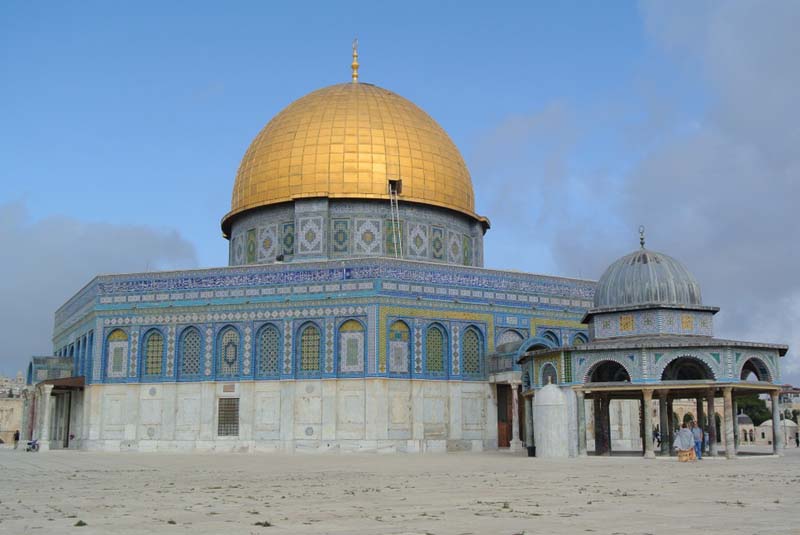
Unknown, Haram al-Sharif/ Temple Mount; The Dome of the Rock, West Bank, Israel, 688-691.Photograph by Patricia Blessing, 2016. The precinct is known in Arabic as Haram al-Sharif. The actual mosque of the district is the Al Aqsa Mosque, not pictured. The Dome of the Rock is a centrally planned building that dates to the 7th century. It venerates the spot from which the Prophet Muhammad ascended to heaven. The photographer Blessing, a scholar of Islamic art and architecture, wrote a succinct history as part of her SAHARA entry on this highly contested place.
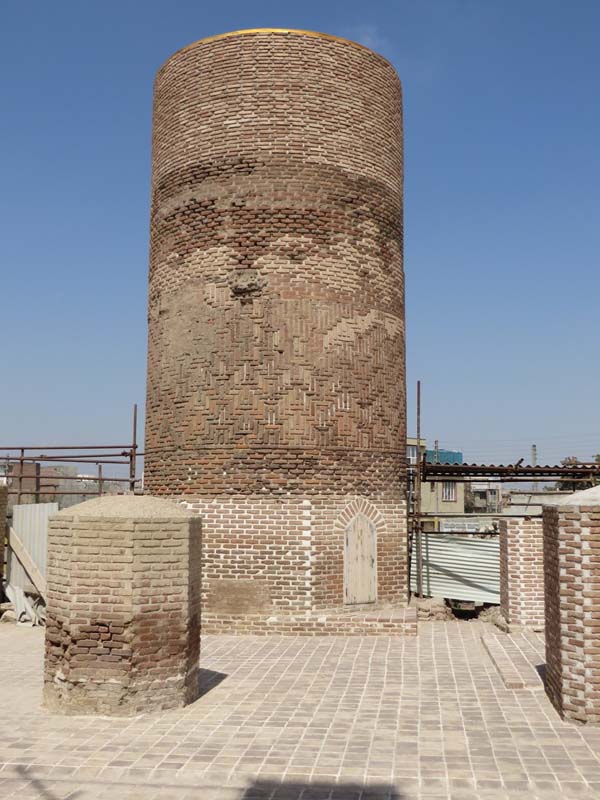
Unknown, Friday Mosque, Ardabil, Iran. Photography by Lorenzo Vigotti, 2013. Vigotti has travelled widely in Iran and Iraq and his photographs greatly enrich SAHARA’s Islamic collection. Ardabil is an archaeological site that served as a functioning mosque until the 1970s. Even though what is shown is only the stub of the site’s minaret, it demonstrates the variety of minaret forms.
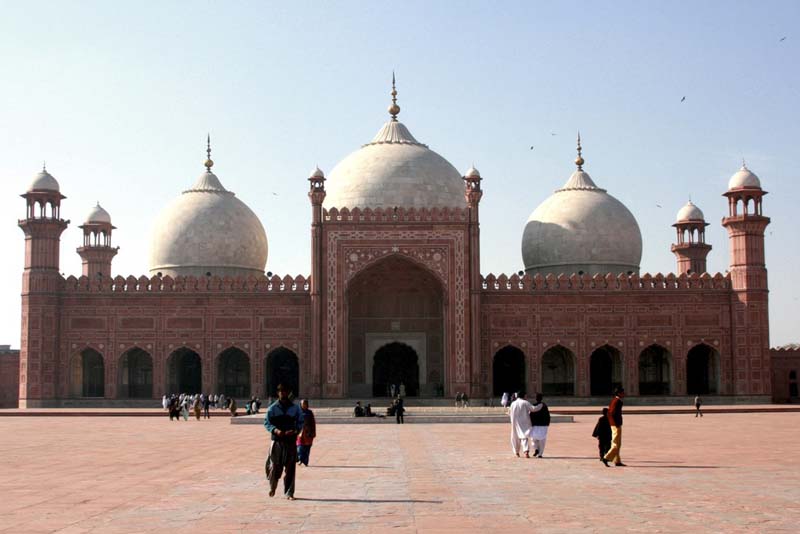
Unknown, Badshahi Masjid, Lahore, Pakistan. 1673-1674. Photograph by Elizabeth Braun, 2006. Braun was the photographer, and the SAHARA contributor is Andrea Schuler. This congregational mosque, the second largest in Pakistan, is made of sandstone and marble. As is often the case with historical monuments, we do not have the names of the architects as meant in a 20th-century way. The patron was the Mughal Emperor Aurangzeb. His foster brother, Finda Khan Koka, oversaw construction and therefore fulfilled some of the activities of architect. The three domes line the qibla wall, at a remove from the front façade, and thus are visible only in a photograph taken from a considerable distance.
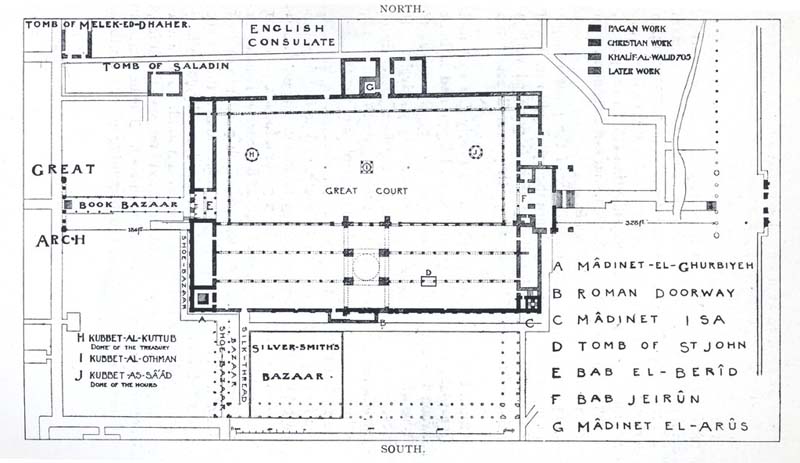
Unknown, Great Mosque of Damascus, Damascus, Syria, 706-714. From Richard Phené Spiers' “Architecture East and West,” photograph by Andrea Schuler. There are not as many plans in SAHARA as we would like. The contributor, Andrea Schuler, is a librarian of digital collections with an interest in Islamic architecture and open access digital resources. The plan of the Great Mosque of Damascus is a great example of a typical mosque, as it has a hypostyle prayer hall, courtyard, qibla wall with mihrab, ablutions fountain, and minarets.
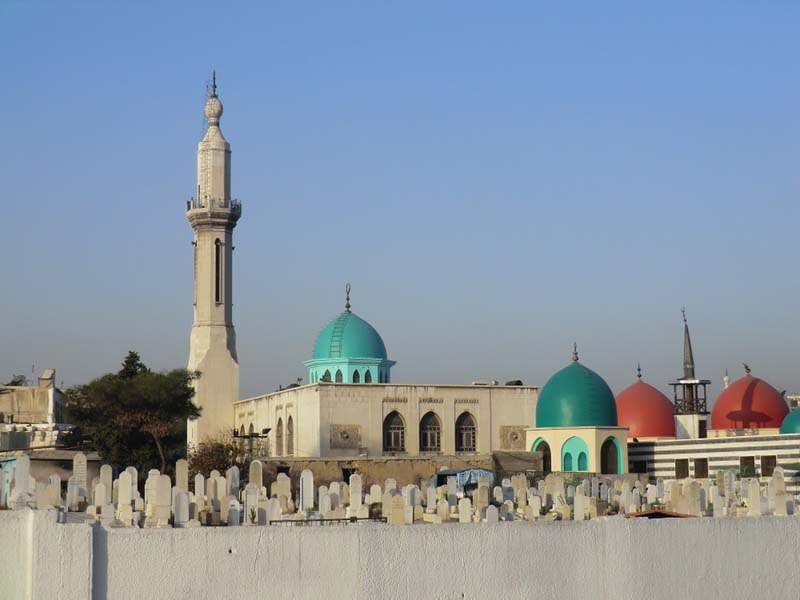
Unknown, Sheikh Reslan Mosque, Damascus, Syria, 13th century. Photograph by Lisa D. Schrenk, 2010. An example of a mosque that is also a shrine, a site revered for housing the remains of Sheikh Reslan, a carpenter turned orator.


